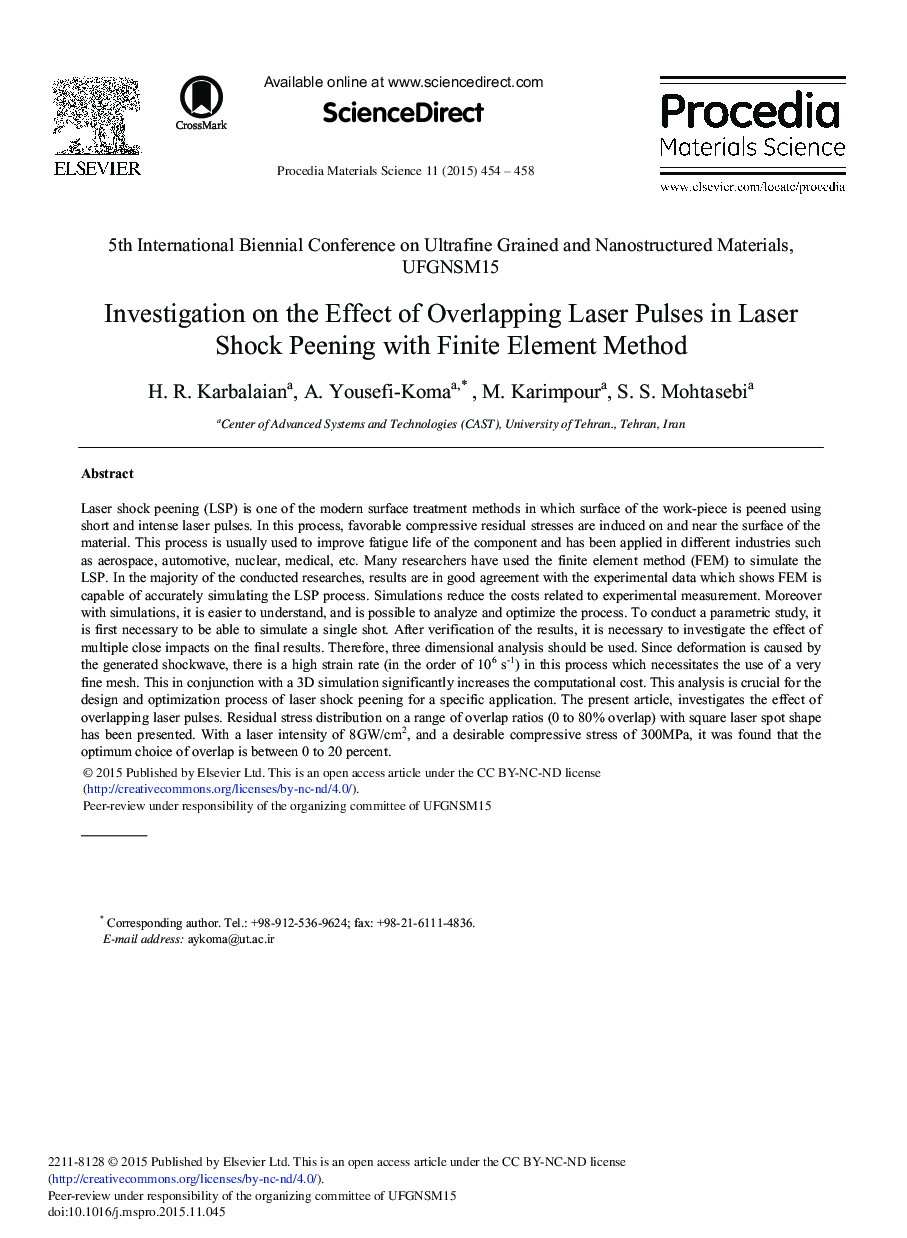| Article ID | Journal | Published Year | Pages | File Type |
|---|---|---|---|---|
| 1634093 | Procedia Materials Science | 2015 | 5 Pages |
Abstract
Laser shock peening (LSP) is one of the modern surface treatment methods in which surface of the work-piece is peened using short and intense laser pulses. In this process, favorable compressive residual stresses are induced on and near the surface of the material. This process is usually used to improve fatigue life of the component and has been applied in different industries such as aerospace, automotive, nuclear, medical, etc. Many researchers have used the finite element method (FEM) to simulate the LSP. In the majority of the conducted researches, results are in good agreement with the experimental data which shows FEM is capable of accurately simulating the LSP process. Simulations reduce the costs related to experimental measurement. Moreover with simulations, it is easier to understand, and is possible to analyze and optimize the process. To conduct a parametric study, it is first necessary to be able to simulate a single shot. After verification of the results, it is necessary to investigate the effect of multiple close impacts on the final results. Therefore, three dimensional analysis should be used. Since deformation is caused by the generated shockwave, there is a high strain rate (in the order of 106 s-1) in this process which necessitates the use of a very fine mesh. This in conjunction with a 3D simulation significantly increases the computational cost. This analysis is crucial for the design and optimization process of laser shock peening for a specific application. The present article, investigates the effect of overlapping laser pulses. Residual stress distribution on a range of overlap ratios (0 to 80% overlap) with square laser spot shape has been presented. With a laser intensity of 8GW/cm2, and a desirable compressive stress of 300Â MPa, it was found that the optimum choice of overlap is between 0 to 20 percent.
Related Topics
Physical Sciences and Engineering
Materials Science
Metals and Alloys
Authors
H.R. Karbalaian, A. Yousefi-Koma, M. Karimpour, S.S. Mohtasebi,
